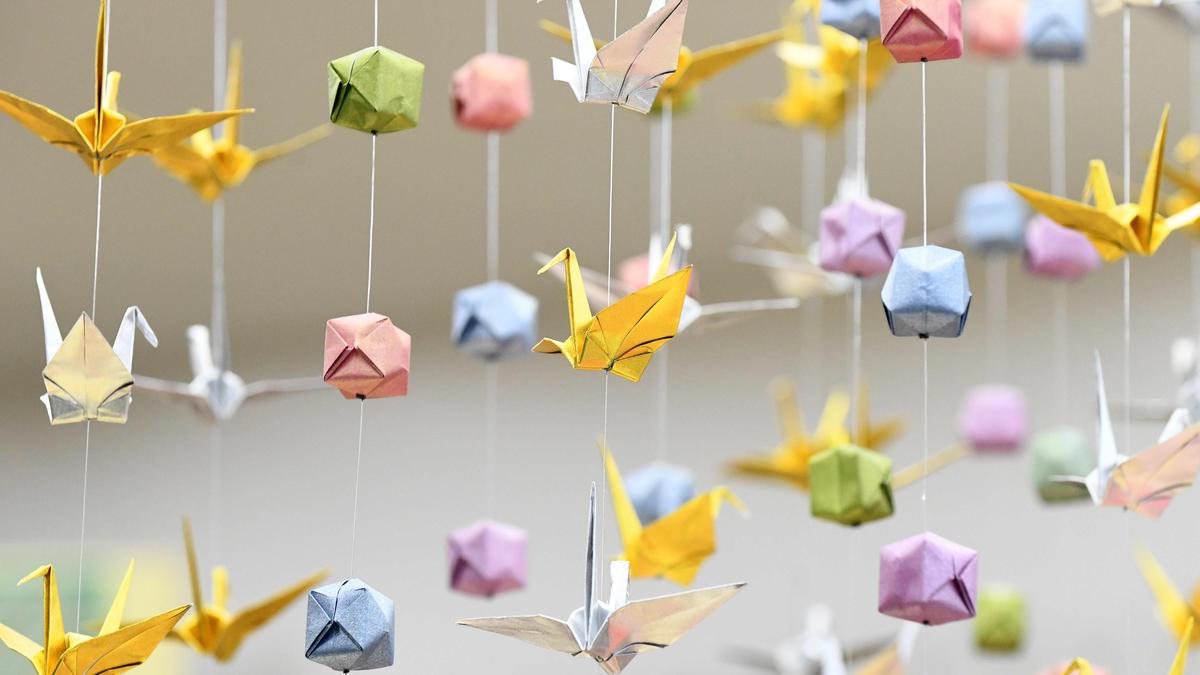
Children across India to fold origami paper cranes in memory of Sadako Sasaki
The Hindu
Join the movement to fold 1,00,001 origami cranes for peace, inspired by Sadako Sasaki's story of hope and love.
A little girl in Japan once believed paper cranes can grant her a wish. The story of Sadako Sasaki, who was affected by the Hiroshima Nagasaki bombings, and her prayer cranes, continues to touch people. Sadako, who had leukaemia, folded origami cranes while at hospital in the belief that if she made 1000 of them, she would survive. She died ten years after the bombings on October 25, 1955.
In her memory, the Cuckoo Movement for Children and the Peace of Paper studio by origami trainer Thiyaga Sekar, are set to encourage children across India to make 1,00,001 cranes, which will be sent to the Children’s Peace Monument at Peace Memorial Park in Hiroshima.
“A paper does not differentiate or divide people,” says Sivaraj of Cuckoo. “It can turn into a butterfly, a deer, a tiger, a snake…showing that on this planet, every life form is equal.” He adds that at a time when hatred amongst people and nations is rife, it is important to spread the message of love and hope that Sadako stood for.
“I am set to travel to government schools across the country, focussing on institutions at tribal hamlets and hill settlements,” says Thiyaga Sekar, who can fold over 500 origami patterns, and has trained hundreds of children in the craft for free over 15 years. He is set to kick-start his journey from Sathyamangalam, training children at tribal schools in villages in and around the town in Erode district. Talks are also on with Narmada Bachao Andolan’s Narmada Jeevan Shalas (schools) at tribal hamlets in Maharashtra.
On October 25, on Sadako’s remembrance day, he will be releasing the second edition of his popular book Kaagidha Kokkugal (Paper Cranes) by Thannaram Publications, that was first brought out in 2019. The book will feature 30 sheets of chiyogami paper along with instructions on folding an origami crane in Tamil and English. It will be released at the Government Tribal Residential school at Solakanai in Erode district.
By the end of the expedition, Thiyaga Sekar hopes to collect a minimum of one lakh cranes to be sent to the Peace Memorial. “Children and educational institutions can also send us cranes that they make,” says Sivaraj. “One lakh is just as estimate, there is no limit to the number of cranes we can achieve.”
The origami cranes can be sent to Peace of Paper Studio, Cuckoo Forest School, Puliyanur village, Singarapettai, Krishnagiri District, Tamil Nadu - 635307. For details, call 9677078360.

After a long, tiring day all we want is to jump right on our cosy beds and rest comfortably on our soft, fluffy pillows, right? Pillows are not quite appreciated as much as electric cars or air-fryers, for instance. Pillows are a wonderful man-made creation that has improved the lives and sleep of people across the globe. Did you know ages ago people used to rest their heads on a HARD ROCK? So how did humans go from sleeping on stones to cosy, fluffy and soft pillows today? Let’s get into the origin of your everyday pillows!

As the November 30 deadline nears for installing vehicle location tracking devices (VLTD) and emergency panic buttons in public service and nationally permitted goods vehicles in Karnataka, transport unions representing cab, bus, and truck operators are urging the government to reconsider the mandate. They argue that the high cost of these devices and a lack of awareness have made it difficult for many vehicle owners to comply with the requirement.









